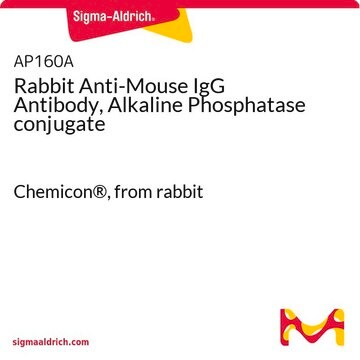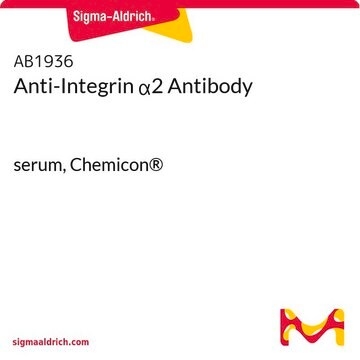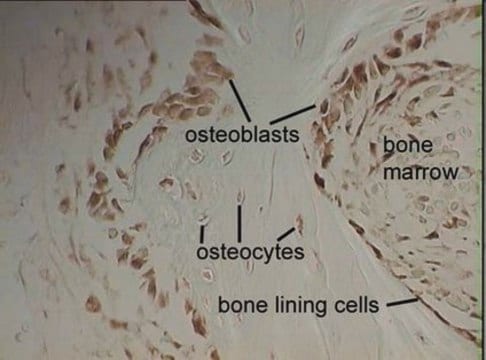MAB1973
Anti-Integrin α1 Antibody, clone FB12
clone FB12, Chemicon®, from mouse
Synonym(s):
CD49a
About This Item
Recommended Products
biological source
mouse
Quality Level
antibody form
purified immunoglobulin
antibody product type
primary antibodies
clone
FB12, monoclonal
species reactivity
human
manufacturer/tradename
Chemicon®
technique(s)
ELISA: suitable
flow cytometry: suitable
immunocytochemistry: suitable
immunohistochemistry: suitable
immunoprecipitation (IP): suitable
western blot: suitable
isotype
IgG1
NCBI accession no.
UniProt accession no.
shipped in
wet ice
target post-translational modification
unmodified
Gene Information
human ... ITGA1(3672)
Related Categories
Specificity
Application
Immunohistochemistry: Frozen sections (7 µm) of placental tissue fixed with acetone for 1 hr. Antibody used at 1:10 dilution (Sato et al., 2003).
Immunocytochemistry: iolated EVT cells firxed with 0.5% PFA @ 4°C for 15 minutes followed by acetone at -20°C for 2 minutes. Antibody was used at 1:10 dilution (Sato et al., 2003).
Immunoblotting: 2 μg/mL
Immunoprecipitation: 1 μg/mL
FACS analysis: 2μg/mL (Sato et al., 2005).
ELISA: 0.5 μg/mL
Inhibition of activated human lymphocyte binding to laminin, collagen IV and fibronectin (Fabbri et al., 1996): 1-5 μg/mL
Optimal working dilutions must be determined by end user.
Target description
Physical form
Analysis Note
Microvascular endothelium
Other Notes
Legal Information
Not finding the right product?
Try our Product Selector Tool.
Storage Class Code
10 - Combustible liquids
WGK
WGK 2
Flash Point(F)
Not applicable
Flash Point(C)
Not applicable
Certificates of Analysis (COA)
Search for Certificates of Analysis (COA) by entering the products Lot/Batch Number. Lot and Batch Numbers can be found on a product’s label following the words ‘Lot’ or ‘Batch’.
Already Own This Product?
Find documentation for the products that you have recently purchased in the Document Library.
Our team of scientists has experience in all areas of research including Life Science, Material Science, Chemical Synthesis, Chromatography, Analytical and many others.
Contact Technical Service








